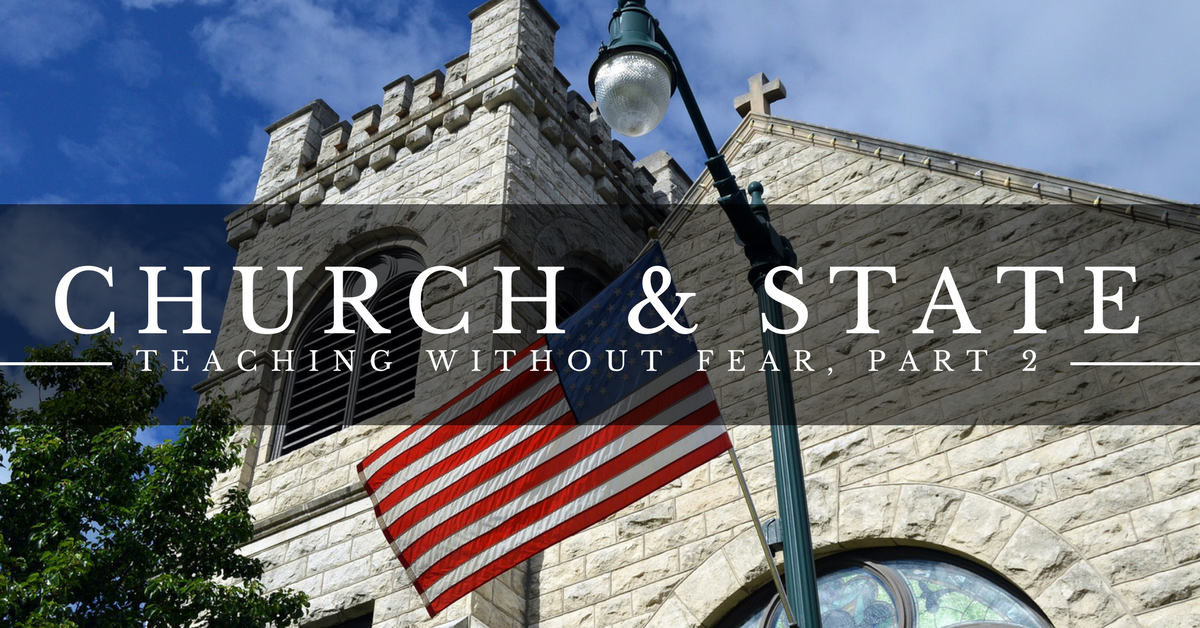You’re sitting in the teacher’s lounge and the topic of “church/state separation” comes up. What should you say?
I have found that when teachers and administrators raise the issue of the separation of church and state, they usually think it is a conversation-stopper – as in, “Oh that can’t be done in class—separation of church and state. End of discussion.”
The first thing I recommend you do is let them know that you also believe in a separation of church and state. Just say “Well I believe in the separation of church and state. I don’t want to see an official ‘Church of America’ like the Church of England. And, I don’t want to see clergy having any kind of legislative authority over our elected officials. Nor do I want to see the government having any kind of ecclesiastical authority over churches. I believe in the separation of church and state.”
But then, in a friendly tone, ask your colleagues some other questions that will cause them to think a little deeper about the issue:
What do you do if a church is on fire? Would a fire department violate the separation of church and state if it put out the fire? It would be the state aiding a church. Correct? Or, what about a synagogue that gets vandalized. Do you not call the police because, again, that would be a violation of the separation of church and state? Should religious institutions have their own police and fire departments?
How do we handle the fact that our state’s academic standards expect us to teach about religion, and expect students to understand something about the Bible? Is our Department of Education wanting us to violate the separation of church and state?
What about freedom of speech? Are you against your students’ freedom of expression just because they might express an opinion based on their religious thinking?
What about censorship? Should we censor parts of our history that show religion in a positive light?
Most likely your colleagues will agree that they don’t mean that kind of separation of church and state. You can agree about academic freedom to teach about religion even when it shows religion in a positive light. And you can agree that, while teachers need to be careful, students have tremendous freedom to express their faith at school. And, yes, police and fire departments should protect religious institutions.
You might, then, want to refer to what the Supreme Court said about the phrase “separation of church and state.” In the case of Lynch versus Donnelly having to do with the public display of a Nativity Scene, the Court made this comment:
“The concept of a ‘wall’ of separation between church and state is a useful metaphor but is not an accurate description of the practical aspects of the relationship that in fact exists. The Constitution does not require complete separation of church and state; it affirmatively mandates accommodation, not merely tolerance, of all religions, and forbids hostility toward any. Anything less would require the ‘callous indifference,’ that was never intended by the Establishment Clause.” (emphasis added)
By having a conversation about the misused phrase “separation of church and state” you just may help your school become a more faith-friendly environment for students and teachers.









